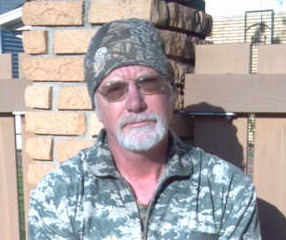
I first learned to hunt deer with a group of neighbors where I grew-up in Ohio.
We all had our favorite stands or places to sit for the first couple days of deer season, then if we hadn’t yet harvested a deer, we would get together as a group to move deer through a wood-lot somewhere towards waiting hunters.
Here in Kansas, I have harvested several deer from stands or blinds strategically placed along travel routes or at natural feeding spots. When we built our raised blind years ago, we hung a corn feeder in a draw in front of the blind. Squirrels chewed a hole in the bottom of the feeder, so we tried another. Unhappy with that feeder, we began simply scattering buckets of shelled corn, ear corn, apples or pears on the ground over an area the size of a couple houses, which we still do today.
Chronic Wasting Disease (CWD) is a very infectious and deadly disease that was first discovered in our KS wild deer in 2005 in the northwestern part of the state, and has steadily spread south and eastward across Kansas. While conservation professionals are not certain of all the ways in which CWD spreads, they agree that the most prevalent seems to be from direct deer-to-deer contact, through saliva, urine, feces etc.
A friend frequently attends the open meetings held around the state where the public is invited to listen to, and to comment on topics such as proposed hunting season dates, etc. and topics of concern such as CWD. He told me that a topic of discussion at the last meeting he attended this summer was whether or not feeding and baiting deer aids in the transmission of CWD, and the possibility of making that practice illegal here in KS arose. A brochure about Chronic Wasting Disease available from the Kansas Dept. of Wildlife and Parks (KDWP) states that “Concentrating deer and elk by artificial feeding or baiting probably increases the likelihood of both direct and indirect transmission between individuals” (meaning deer and elk.) A recent post on the KDWP Facebook page urges hunters not to feed or bait deer, and a topic at the early September open-meeting at Kansas City was a proposal to disallow bait for deer to be placed on KDWP managed lands and on all land enrolled in the popular walk-in hunting program.
As one would expect, the KDWP Facebook post urging people not to bait or feed deer as a way to help slow the spread of CWD drew a multitude of comments, with those in support of feeding deer far outnumbering those against it. Comments supporting banning the practice offered little factual information, most merely stating their opposition to feeding and baiting deer, and that deer should be hunted “the old-fashioned way.” Comments supporting feeding and baiting deer often mentioned the fact that many deer naturally feed on the same alfalfa, corn stubble, soybean stubble and new wheat fields, making the commentor wonder how deer feeders are a problem.
We feed deer mostly to get them comfortable with browsing in front of our blind. Last season, I was seeing the same five does and fawns every morning. My sister on who’s property our blind stands, had never spent time with us in the blind during hunting season, so I took her with me one morning. I had prayed that God would at least allow us to see the same five deer that morning, but to our amazement, He brought us fourteen! For forty-five minutes, she got to watch fawns run and play like lambs, and young bucks spar with each other, none of which would have happened had the scattered corn not invited them to pause and browse on their way through to a nearby bedding area.
If corn is being fed to deer by dumping it in a big pile on the ground where every critter from miles around can come and eat from that same pile, I can see how that could concentrate saliva, urine and feces there. But I’m not convinced at all that scattering corn and apples in a large area like we do, or using a battery-powered corn feeder that flings a small amount of corn at a time over a broad area will contribute to the spread of Chronic Wasting Disease. I understand the argument, but color me skeptical. Continue to Explore Kansas Outdoors!
Steve Gilliland, Inman, can be contacted by email at [email protected].






